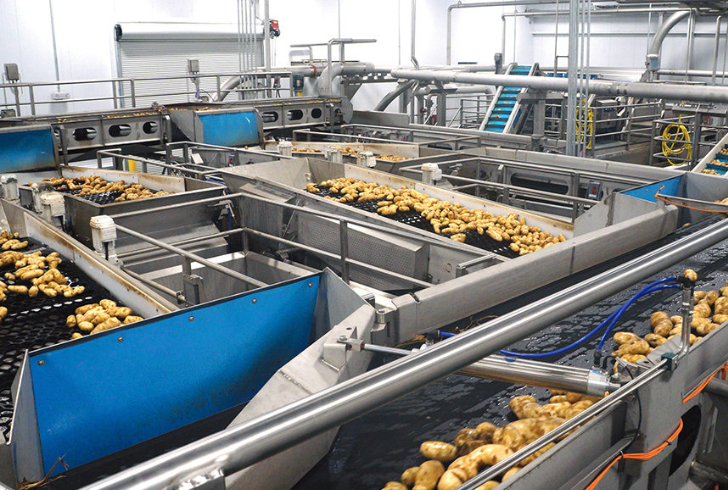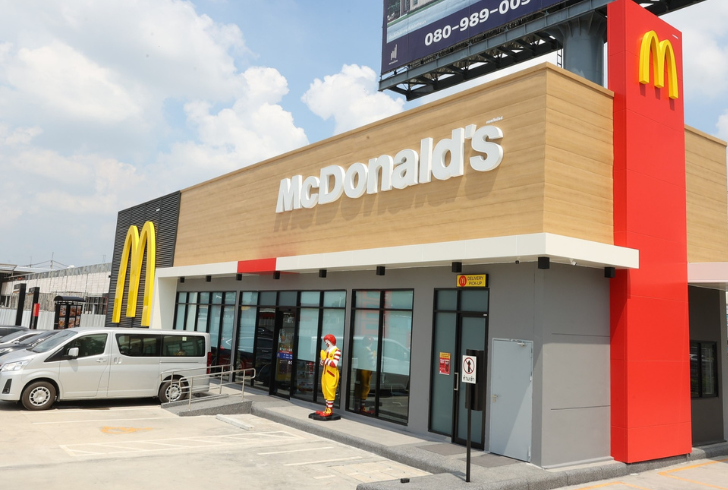The landscape of America’s fast-food industry is shifting, and it’s sending shockwaves through suppliers like Lamb Weston, the self-proclaimed “French Fry King.” This company, which is North America’s largest producer of French fries, is facing challenges that are reshaping its business model.
With a significant portion of its sales tied to fast-food chains, Lamb Weston has recently announced the closure of a production plant in Washington state. Due to a decline in customer demand, this decision will affect nearly 400 employees or about 4% of its workforce.
The Current State of the French Fry Market

tricitiesbusinessnews.com | Lamb Weston’s shares have plummeted 35% due to oversupply and weak demand.
Recent trends indicate that the demand for french fries is not what it used to be. Fast-food chains are dealing with higher prices, leading many customers to choose smaller portions or skip fries entirely. As a result, Lamb Weston has seen its share prices drop significantly, down 35% over the past year, due to an oversupply in the market and weak customer demand.
Economic Pressures
Restaurant prices have been rising at a faster pace than grocery prices, leading customers to reconsider their dining choices. With increasing costs, many people are choosing to dine out less frequently.
Shifting Consumer Preferences
The rise of self-service kiosks at fast-food outlets like McDonald’s is reshaping how customers interact with these brands. While kiosks were initially feared to be job killers, they have also altered purchasing habits. As people become accustomed to ordering smaller meal sizes, this shift has further affected the demand for traditional side items like french fries.
A Closer Look at Fast-Food Chains
Fast-food giants, particularly McDonald’s, are attempting to lure customers back with value menus. Recent offerings include a $5 meal that features a choice between a McDouble or a McChicken sandwich, a small order of fries, chicken nuggets, and a drink. However, despite these promotions, the impact on french fry consumption has been less than favorable. Customers are often opting for smaller fries or skipping them altogether.
Lamb Weston’s CEO, Thomas Werner, noted, “Many of these meal deals have consumers opting for smaller sizes, trading down from medium to small fries.” This shift in consumer behavior has important implications for the french fry supply chain, as smaller portion sizes lead to lower sales volumes.
McDonald’s Struggles and its Effects
McDonald’s remains Lamb Weston’s largest customer, contributing approximately 13% of their total sales. However, the fast-food giant is experiencing its own set of challenges. Recent data reveals that sales at U.S. locations open for at least a year declined by 0.7% last quarter. This downturn reflects a broader trend, with customer traffic to fast-food outlets dropping by 2% in the latest quarter and by 3% in the previous one.

Instagram | mcdonaldsthailand | McDonald’s is Lamb Weston’s biggest customer, accounting for 13% of sales.
Lamb Weston is closely tied to these fluctuations. As noted by industry analysts, “As McDonald’s goes, so goes Lamb Weston.” This interdependence highlights the precarious situation faced by suppliers heavily reliant on fast-food chains for their business.
The Future of the French Fry Industry
As the French Fry King navigates this challenging environment, it’s essential to consider what the future holds. The industry must adapt to shifting consumer preferences and economic realities. Here are a few key considerations for stakeholders:
1. Innovative Offerings – Exploring new product lines that cater to evolving tastes, such as healthier or gourmet french fry options, could attract a broader customer base.
2. Sustainability Practices – Emphasizing sustainable sourcing and production practices may enhance brand loyalty among environmentally conscious consumers.
3. Leveraging Technology – Utilizing data analytics to understand consumer behavior can help suppliers anticipate market trends and adjust their strategies accordingly.
The challenges faced by the French Fry King and its dependence on major fast-food chains highlight a significant change in the dining landscape. As consumer preferences shift and economic pressures increase, suppliers and fast-food chains must adapt their strategies to succeed in this new environment. Focusing on innovation, sustainability, and technology will be essential for overcoming these obstacles in the future.













